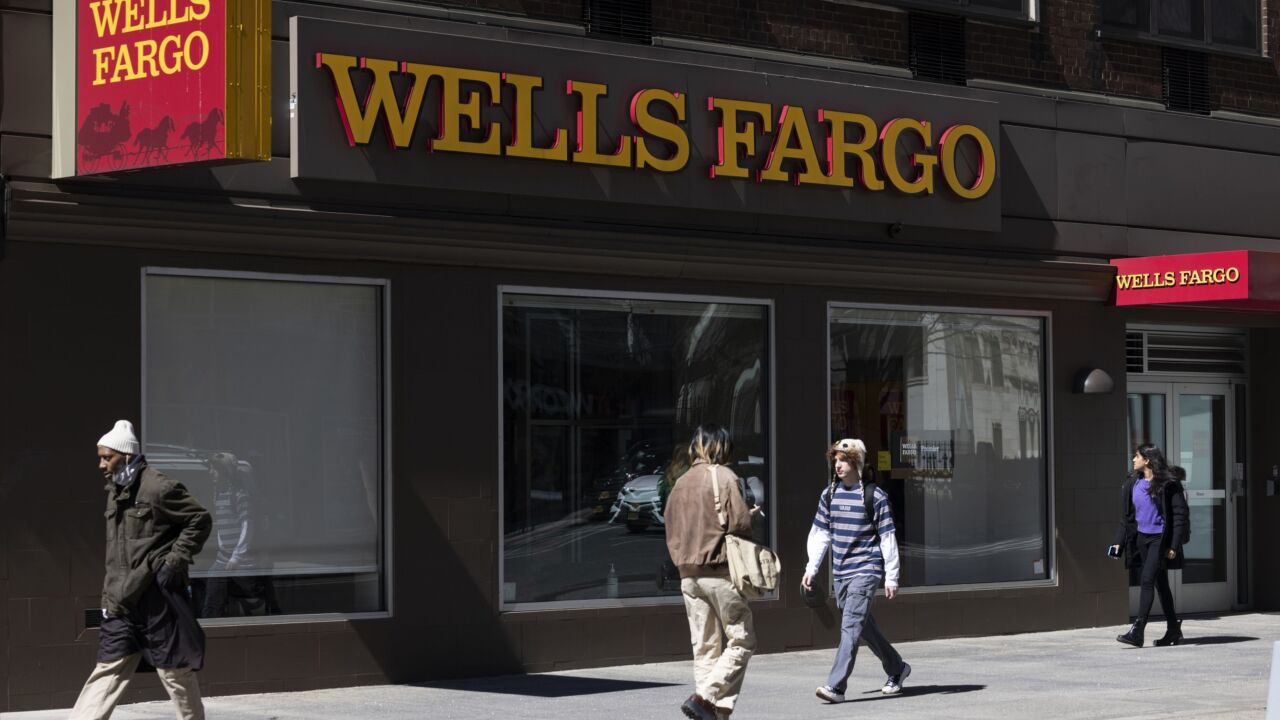-
Small merchants have found that using a mobile payments system from Bling Nation is a good good way to boost revenue — and local banks have seen the benefit in increased deposits.
March 22 -
Sensing an appetite among community banks for more remunerative transaction processing, the vendor Integrated Bank Technology Inc. said Monday that it would offer financial clients an alternative payment system from the Palo Alto, Calif., start-up Bling Nation Ltd.
May 12 -
The start-up processor Bling Nation Ltd. said that consumers showed strong support for making purchases with contactless payment stickers during a recent test of the emerging technology.
May 5 -
Card companies are betting that if they stimulate consumer demand for mobile payments, it will spur the phone networks and manufacturers to move faster on improving the technology.
April 17
Bling Nation Ltd. wants to see how well its hands-on approach to deploying mobile payment systems can scale, with a new partnership that gives it access to over 330 potential bank clients.
In the past year, Bling has demonstrated that is has big dreams for small towns, and has deployed its mobile payment system among community banks that have strong merchant ties in close-knit communities. This has required a lot of on-the-ground work — the Palo Alto, Calif., company's executives have personally had a hand in getting merchants to sign up to use its payment system.
Bling announced last week a referral agreement with Bankers' Bank of the West, giving it access to any of the Denver correspondent bank's clients that would be receptive to Bling's system.
Bling banks issue contactless payment stickers that can be used to initiate debit purchases drawn on users' accounts at its community bank partners. Merchants must install new readers to accept Bling payments. This setup has required Bling to be a sales force both to banks and the merchants around them. (Most users affix the sticker to their mobile phones.)
So how will this change if another company is responsible for pitching the service to banks?
"It's going to be, in the beginning, trial and error. I'm not going to lie to you," said Meyer Malka, Bling's founder and a co-chief executive.
But whatever the new system turns out to be, "we're still going to be very involved," he said. "I think that one of the key successes of our company was a deep understanding of our participants."
Though the referral deal with Bankers' Bank was only recently signed, it has been involved with Bling from the very beginning, Malka said.
Bling's first client, State Bank in La Junta, Colo., was a Bankers' Bank client that was concerned that working with Bling would violate some of the exclusivity agreements in its contract with Bankers' Bank.
"They were concerned Bling Nation was a problem, and they said, 'Why don't we have a call with them?' " Malka said.
That call went well.
"They knew that this was something that made sense and they knew that over time, if we were successful, that they were willing to partner with us," he said.
Malka said Bling and Bankers' Bank serve the same audience — five of Bling's eight clients in Colorado are Banker's Bank clients.
Mary Ann Elliott-Supples, the senior vice president of the bank card department for Bankers' Bank, said her company did not see Bling as competition to its existing credit and debit card program, but a complement.
Because Bling works with just one bank per town, it strengthens the bond between merchants and that bank, she said.
Bling provides "the capability for us to help community banks … and keep the money within the community," Elliott-Supples said.
Under the referral agreement with Bling, Bankers' Bank would be "the sales arm" for banks, but not merchants, she said. That half of the sale is still up to Bling.
Malka said Bling is learning from its earlier deployments and is nurturing strategies to bring a community's merchants on board.
In its early deployments, Bling found that one community business leader may take it upon his or herself to become Bling's champion for that region. Malka said Bling hopes to foster a similar level of enthusiasm in new towns.
Aaron McPherson, a research manager for payments at IDC Financial Insights, said Bling's partnership with Bankers' Bank is "a really good move for them" as they seek new community banks.
"Especially when you're dealing with this size bank, you really need a new channel partner," he said.
Handing off part of its sales process should help Bling grow, McPherson said. "They clearly need to find a way to scale the model up so that they're not doing everything themselves."
George Tubin, a senior research director at TowerGroup Inc. agreed that Bling should no longer be going it alone.
"It's always better to go to the bank through a trusted relationship that's already there rather than introducing yourself cold," he said.
Bling faces two challenges as it grows: marketing to banks and marketing to merchants.
"This certainly helps with the first part of the equation," he said.
Tubin was concerned about Bling's strategy of addressing the merchant half by finding a champion for its system among each community's business leaders. "I don't know if they can count on it," he said, but "they can hope for it."
Still, Bling is no stranger to putting in the work necessary to get its deployments rolling, he said.
"It's a time-consuming and labor-intensive business model, and it seems to be working for them," he said.





